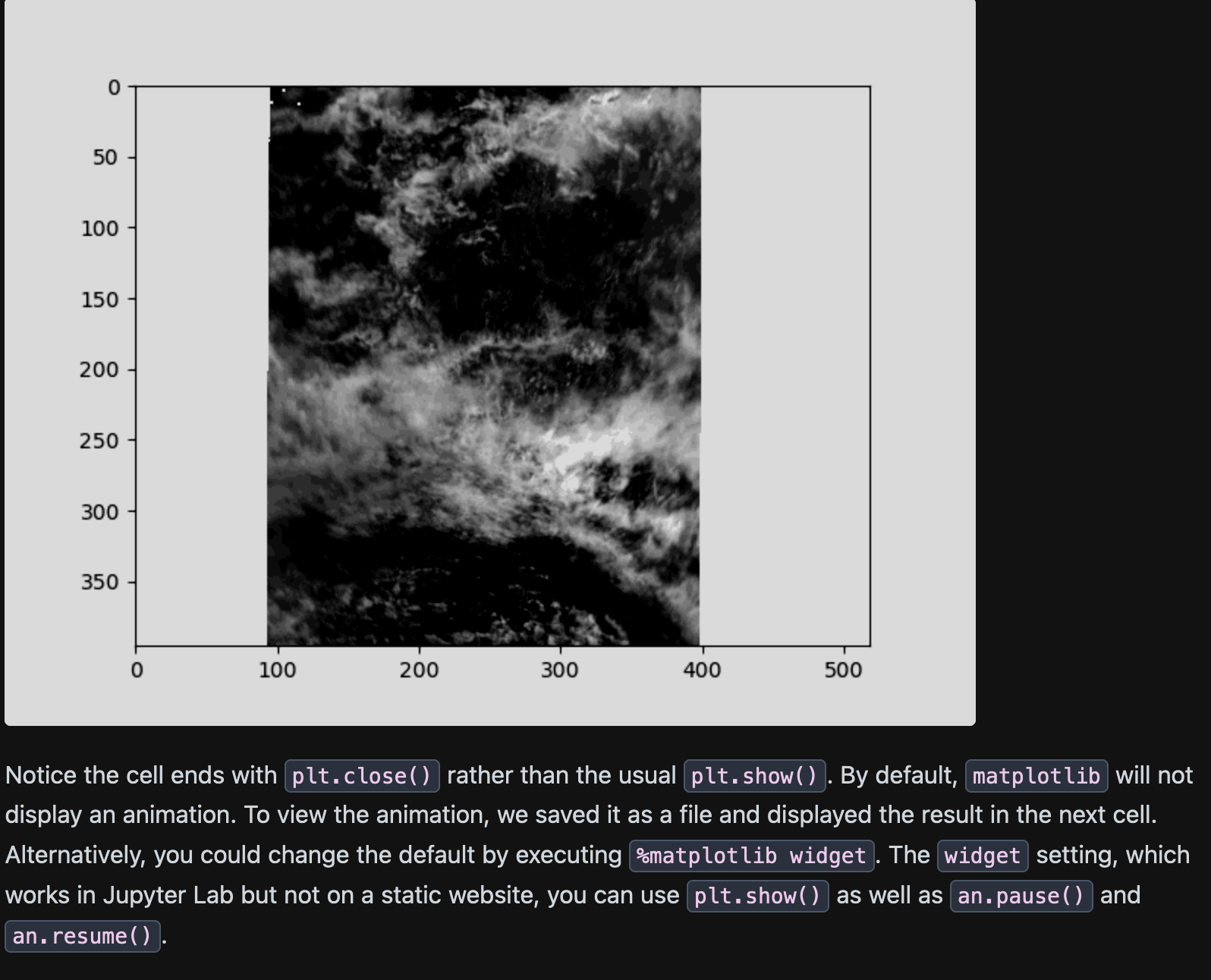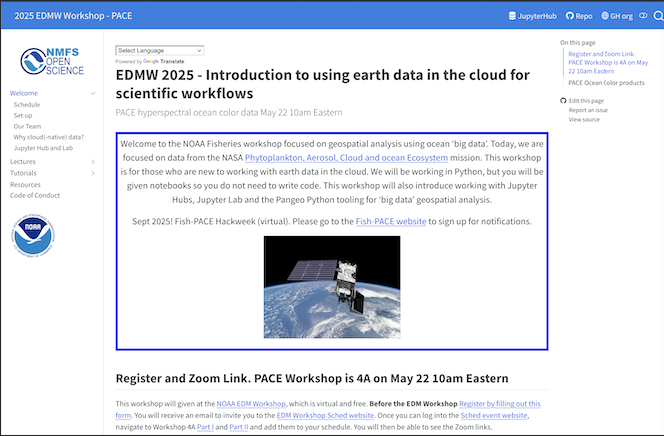
We are constantly working on new material. Come back often!
Have an idea? Share it with us on the Earthdata Forum using the tags OB.DAAC under DAAC and Data Recipes under Services/Usage.
 Interactive tutorials
Interactive tutorialsRun the code as you follow the training with Jupyter notebooks.
This collection of Jupyter notebooks is meant to help you get started accessing, visualizing, and analyzing OB.DAAC data products with Python. You can learn from these notebooks either by viewing the code and results on this webpage or by downloading the notebook files and running them with JupyterLab. If you plan to run any of these notebooks, please continue reading for information about the Earthdata Cloud and environments in Python.
The notebooks import Python packages that must be installed and discoverable on the host. Please use our environment.yml file to create a Conda environment
that satisfies all the dependencies, or otherwise ensure your
environment satisifes these dependencies. Note that the environment
includes the ipykernel package in case your JupyterLab includes nb_conda_kernels or you want to manually make the environment available to JupyterLab as a kernel.
 Cloud computing
Cloud computingSome tutorials use cloud computing resources.
The 
Can I use an existing AWS platform?
You may already have access to the AWS platform through your institution or research community. For example, JupyterHubs maintained by Openscapes, Cryo in the Cloud, MAAP, and NASA Goddard's Open Science Studio are running on AWS in the same "us-west-2" region that hosts the NASA Earthdata Cloud. If that is not the case, you may want to learn about getting started with AWS for NASA Earthdata Cloud.
Learn the essential things you need to know to access and process data in this series of Jupyter Notebooks.








Follow the tutorials presented during the PACE Hackweek in August 2025, including updated content from the 2024 Hackweek and many new tutorials. Video recordings are available for all tutorials and slides and Jupyter Notebooks are available when relevant.

Find multiple tutorials from the PACE edition of the NOAA Enterprise Data Management Workshop (EDMW) 2025, the NOAA Fisheries workshop focused on geospatial analysis using ocean ‘big data’, including optical properties and new products from PACE.

Follow the tutorials presented during the ARSET - Introduction to Plankton, Aerosol, Cloud, Ocean Ecosystem (PACE) Hyperspectral Observations for Water Quality Monitoring. Video recordings are available for all tutorials and slides and Jupyter Notebooks are available when relevant.




Follow the tutorials presented during the PACE Hackweek in August 2024. Video recordings are available for all tutorials and slides and Jupyter Notebooks are available when relevant.










In August 2022 OCB sponsored a training course for early career scientists, organized by NASA scientists and university professor to entrain the next generation of ocean scientists on the upcoming NASA PACE mission and passive satellite remote sensing, with foci on both oceans and atmospheres. This playlist contains the recorded lectures from this course.

Learn how to use the official software of the OB.DAAC for analysis and visualization of remote sensing data.


